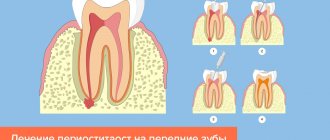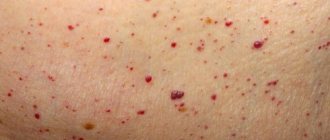From this article you will learn:
- how to treat aphthous stomatitis in children,
- symptoms and treatment of aphthous stomatitis in adults,
- list of effective drugs.
The article was written by a dentist with more than 19 years of experience.
Aphthous stomatitis is a disease in which one or more round ulcerations appear on the oral mucosa, which are covered with a necrotic coating of a gray or yellowish tint. Such ulcers (synonymous with aphthae) are not the result of acute infections, and therefore are not contagious, but nevertheless, such damage to the mucous membrane will require specific therapy.
According to statistics, up to 20% of the population suffers from this form of stomatitis. Young children, as well as adults aged 20 to 30 years, are especially susceptible to this disease. In people of more mature age, there is a dependence: the higher the age, the less likely it is to develop. Aphthous stomatitis has a code according to ICD 10 - K12.0. Below you can see what this disease looks like in children and adults.
Aphthous stomatitis in children: photo
Aphthous stomatitis: photos in adults
The most important thing in treating stomatitis is to first correctly determine its form. Indeed, depending on its form, and it can be either herpetic or aphthous stomatitis, treatment for both adults and children will be completely different. Therefore, if you are not very sure of the diagnosis, it is best to familiarize yourself with the symptoms of both forms before starting treatment.
Aphthous stomatitis: symptoms
If you suspect you have aphthous stomatitis, the symptoms are quite similar. A day or two before the onset of ulcers, patients usually notice a slight burning sensation in some areas of the oral mucosa. A little later, one or 2-3 clearly defined ulcers (aphthae) appear, covered with a necrotic coating of a gray or yellowish tint. The ulcers are round in shape and their diameter is usually no more than 1 cm, and along the perimeter they are surrounded by an inflammatory red halo.
Ulcers of this size usually heal within 10 to 14 days without scarring. However, in 10-15% of patients, the diameter of the ulcers may exceed 1 cm, and sometimes they can even reach 2-3 cm in diameter. Ulcers of this size are usually deeper than ulcers smaller than 1 cm (which may cause the ulcer border to appear raised). Healing of such ulcers usually lasts up to 6 weeks, and most often with the formation of scar tissue.
Important: the typical localization of ulcers is on the mucous membrane of the cheeks and the inside of the lips, on the soft palate (Fig. 7-8), tonsils, as well as the lower and lateral surfaces of the tongue. This localization is due to the fact that ulcers in aphthous stomatitis occur primarily on “non-keratinized” areas of the oral mucosa, i.e. where keratinization of the mucosal epithelium does not occur.
Less commonly, ulcers can occur on the keratinized mucous membrane (hard palate, dorsum of the tongue, tightly attached alveolar gum around the teeth) - this may be a signal of autoimmune diseases or HIV infection. In contrast to aphthous stomatitis, keratinized gums are affected precisely in herpetic stomatitis, which can also be a distinguishing feature of these two main forms of stomatitis from each other.
Foci of aphthous stomatitis on the soft palate (photo) –
→ Symptoms of herpetic stomatitis
Preventive measures
To avoid causing the formation of aphthae in the mouth, you need to:
- Perform daily hygiene procedures to remove plaque from teeth and tongue;
- eat only well-washed foods;
- do not refuse to visit the dentist if erosive changes occur on the oral mucosa;
- include more vitamins in the diet;
- use toothbrushes of medium or soft hardness;
- Visit the dentist every six months.
If you adhere to all of the above recommendations, then the likelihood of painful aphthae appearing in the oral cavity will be reduced to zero.
Causes of aphthous stomatitis –
The leading role in the development of recurrent aphthous stomatitis is played by the immune system, namely reduced “immunological reactivity”, as well as disturbances in the system of “nonspecific protective factors”. For parents, it is not necessary to know the details, but it is important to understand that such changes in the immune system are primarily caused by - 1) the presence of foci of chronic infection in the child, for example, this could be a sore throat, chronic tonsillitis or pharyngitis, 2) diseases of the gastrointestinal tract, 3) frequent stressful situations can also play a role.
In patients with aphthous stomatitis, the following occurs: a decrease in the number and functional activity of T-lymphocytes - with a simultaneous increase in the number of B-lymphocytes, an increase in the level of serum immunoglobulins (antibodies) of the IgG class and circulating immune complexes. The result of all this is an excessive immune response to bacterial antigens. The main bacterial antigen for aphthous stomatitis is the α-hemolytic streptococcus Streptococcus sangui (absolutely all people have it, and in the normal state of the immune system it is not pathogenic).
An excessive immune response manifests itself in the development of an autoimmune reaction, which is also directed against the epithelial cells of the oral mucosa. This reaction involves both the cellular immune system (for example, neutrophils, mast cells) and humoral immunity (antibodies). As a result of the autoimmune process, foci of epithelial necrosis appear on the oral mucosa, i.e. Several ulcers form.
Additional factors –
But in addition to the main mechanism for the development of aphthous stomatitis (which we described above), some other reasons can lead to the development of aphthous stomatitis:
- food allergens,
- allergy to components of oral hygiene products (for example, parabens),
- large amounts of nitrates in drinking water and foods.
In addition, there is a large list of chronic diseases and conditions of the body that can also cause aphthous stomatitis or increase the risk of developing it (see list below). The risk of developing aphthous stomatitis will be higher if the patient has pathology of the gastrointestinal tract, immune system, blood disease, etc. Predisposing factors also include frequent biting of the mucous membrane of the cheeks and lips, as well as the use of toothpaste with sodium lauryl sulfate (SLS).
Important: a clinical study that revealed the effect of sodium lauryl sulfate, found in many toothpastes, on the development of aphthous stomatitis was published in the medical journal “Oral Diseases” (Jurge S, Kuffer R, Scully C, Porter SR. 2006). At the same time, you must understand that sodium lauryl sulfate is not an independent cause of ulcers on the mucous membrane, and that it only increases the risk of developing repeated outbreaks of aphthous stomatitis - in the presence of real reasons (for example, an excessive immune response to bacterial antigens, or in the presence of food allergies) .
The effect of lauryl sulfate is that it stimulates desquamation (squamation) of epithelial cells of the mucous membrane, which leads to a decrease in its thickness. A decrease in the thickness of the mucous membrane makes it more vulnerable to the real causative factors in the development of aphthous stomatitis (24stoma.ru). Therefore, in patients with recurrent aphthous stomatitis, it is better to use toothpaste without lauryl sulfate, as well as without parabens.
Systemic diseases and conditions of the body –
- during menstruation in women,
- in case of abrupt cessation of smoking,
- celiac disease, enteropathy, malabsorption,
- for hematological diseases,
- diseases of the immune system,
- with a lack of folic acid, vitamins B6 and B12,
- against the background of cyclic neutropenia, Behcet's syndrome, Reiter's syndrome, PFAPA syndrome (periodic fever, aphthous pharyngitis + cervical adenopathy), as well as against the background of systemic lupus erythematosus, reactive arthritis, inflammatory bowel diseases - especially Crohn's disease, as well as against the background of HIV .
What is the diagnosis based on?
The diagnosis of aphthous stomatitis is made based on visual examination, and in most cases does not require any laboratory tests. Only in severe forms or constantly recurring (recurrent) aphthous stomatitis is it necessary to conduct a complete blood count, which may indicate the presence of neutropenia or iron deficiency anemia.
As we said above, enteropathy may be the cause in about 5% of cases, and it can be diagnosed by detecting endomysial antibodies in the blood serum. Behcet's syndrome can be suspected if inflammation of the uvea (uveitis) occurs simultaneously.
Testing for HIV is always required if stomatitis recurs often or is severe, and especially if ulcers occur not only in areas of the mobile mucous membrane of the oral cavity, but also in areas of keratinized mucosa (for example, on tightly attached alveolar gums near the teeth , back of the tongue, hard palate).
Forecast and prevention of the disease
If you consult a doctor in a timely manner, the treatment prognosis is favorable. Strict adherence to the doctor’s recommendations allows you to achieve remission.
The main prevention of stomatitis is maintaining oral hygiene. In order not to injure the mucous membrane, it is recommended not to use a hard brush. From time to time it is worth using pastes with an anti-inflammatory effect (contain oak bark).
After each meal you need to rinse your mouth with an herbal solution or special compositions. Regular visits to the dentist twice a year increases the chance of noticing the first manifestations of the disease.
It is the responsibility of parents to ensure that the child washes his hands frequently and thoroughly with soap and rinses vegetables and fruits before eating them.
Aphthous stomatitis: treatment, drugs
Aphthous stomatitis in adults is the same as canker sores in children - the treatment is the same, and the treatment strategy described below is suitable for patients of any age. As for the medications listed later in the article, some of them do have age restrictions, which we will also indicate.
Due to the fact that it is usually impossible to clearly identify the specific cause of aphthous stomatitis in a particular patient, treatment will be multifocal, i.e. drugs of several groups are used simultaneously. The choice of treatment strategy and medications will depend on the following 3 factors:
1) on the severity of symptoms, 2) on the frequency of relapses, 3) on identified predisposing factors.
Treatment at the first stage should be aimed at reducing pain and inflammation in the area of ulcers, and at the second and third stages - at speedy epithelization of ulcers and preventing their occurrence in the future. To facilitate the choice of the best treatment option, all patients can be divided into 3 types (according to the criteria - severity of the disease and frequency of relapses).
- Type A - in patients of this type, aphthous stomatitis occurs no more than several times during the year and is characterized by slight pain.
First of all, in such patients it is necessary to identify local predisposing factors and eliminate them (for example, overhanging edges of fillings or hygiene products with sodium lauryl sulfate). It is important to ask the patient about eating habits to evaluate a possible relationship between stomatitis outbreaks and certain foods. The patient is advised to avoid solid foods (eg, crackers, toast), all types of nuts, chocolate, eggs, acidic drinks or foods - fruit or citrus juices, tomatoes, pineapples, salty foods. You should avoid eating spicy foods, any spices, including pepper and curry, as well as alcoholic and carbonated drinks. In type A patients, local symptomatic therapy is mainly used, which includes antiseptic rinses and gel applications for pain and inflammation + antihistamines.
- Type B - in such patients, aphthous stomatitis develops almost monthly, and the ulcers are so painful that they force the patient to change habits (for example, brushing teeth less often due to severe pain). It remains important to identify local and general predisposing factors and, if possible, eliminate them. It is very important to teach patients of this type to feel the first signs of the imminent appearance of ulcers - burning, itching or swelling of the mucous membrane, in order to provide early local treatment even before the formation of the ulcers themselves.
- Type C - in patients of this type, ulcers are very painful, appear so often that while one lesion is healing, the next one appears almost immediately. This group also includes patients in whom local treatment in the oral cavity is completely ineffective, and improvement in their condition occurs only after the use of systemic therapy (we will also discuss such therapy below).
Local treatment of aphthous stomatitis:
Below we will talk in detail about how to treat aphthous stomatitis in children and adults. Please note that topical therapy in the oral cavity is basic, and that it gives good results only in patients of type A, and to a much lesser extent in patients of type B. For patients of types B and C, good results can only be achieved here when using systemic therapy.
1) Antiseptic rinses –
This could be Miramistin, Chlorhexidine or Hexoral. If we are talking about children, then at the age of 0 to 3 years it is optimal to use Miramistin in the form of a spray, irrigation from which is carried out 4 times a day. In children over 3 years old, it is already possible to use Hexoral aerosol - this combined drug contains the antiseptic hexetidine, as well as components with anti-inflammatory and analgesic effects (methyl salicylate, peppermint oil, anise oil, clove oil, eucalyptus oil).
The disadvantage of Miramistin is that after irrigating or rinsing the mouth with this drug, there is no indelible layer left on the oral mucosa. Those. The antiseptic included in Miramistin will be completely washed off with saliva within 10 minutes after use. At the same time, after using hexetidine (part of Hexoral), as well as chlorhexidine, an indelible layer of the drug is formed on the mucous membrane, in which clinically effective concentrations of the antiseptic will remain for approximately another 7 to 12 hours.
That is why Miramistin should be used for aphthous stomatitis 4 times a day, and Hexoral or chlorhexidine should be used only 2 times a day (the latter will still be more effective). In addition, when a child can already rinse his mouth independently without swallowing the drug, it is advisable to rinse his mouth with Miramistin for about 2 minutes, for adults - 3 minutes. At the same time, rinse your mouth with Chlorhexidine or Hexoral solution - just 1 minute 2 times a day.
Summary: in general, the drug Miramistin is worth choosing - either for children under 3 years of age, or if the patient can already rinse his mouth on his own 3-4 times a day for 2-3 minutes. The fact is that an important advantage of miramistin is that it has the property of stimulating the local immunity of the oral mucosa. But this effect will not be significant when using a spray (here you need full rinses 3-4 times a day for 2-3 minutes). In all other cases, we recommend Hexoral in the form of an aerosol for children, and in the form of a rinse solution for adults. If you need an inexpensive drug, choose Chlorhexidine.
2) Anti-inflammatory/pain-relieving gels –
The best option for adults and children is the drug Cholisal based on choline salicylate and cetalkonium chloride, which have an antiseptic, anti-inflammatory and analgesic effect. The advantage of this drug is the complete absence of age restrictions. The drug is applied to the ulcerations of the mucous membrane - using light massaging movements, using a clean index finger), i.e. you have to rub it in gently. Before applying the drug, it is advisable to dry the mucous membrane at the application site using a dry gauze swab (this will increase efficiency).
To relieve pain from ulcers in adults and children over 12 years of age, you can use the drug Kamistad, containing 2% lidocaine hydrochloride, chamomile extract and the antiseptic benzalkonium chloride. And for young children - the drug “Kamistad Baby” based on chamomile extract and polidocanol (this is a weak pain-relieving component). But in comparison with Cholisal, the effectiveness of these drugs for aphthous stomatitis will certainly be lower.
Interesting: according to the results of European and American clinical studies, the prescription drug Amlexanox (trade name Aphthasol) was recognized as the best drug for the treatment of aphthous stomatitis. This drug is available in the form of a paste for application to the surface of ulcers 4 times a day, and it has anti-inflammatory, antiallergic and immunomodulatory effects. Unfortunately, it is not sold in Russia and can only be purchased by prescription in Europe or the USA.
3) Occlusive/protective agents –
In patients with severe pain (very painful ulcers), the use of an anti-inflammatory/analgesic gel alone may not be enough. And for such patients we can recommend the use of bismuth-based drugs (for example, it can be bismuth subsalicylate or bismuth tripotassium dicitrate). Such drugs are usually used in the treatment of gastric and duodenal ulcers to reduce pain.
The point of using these drugs is that when applied to the surface of ulcers, they form an insoluble protective film that protects the surface of the ulcer from irritants (this significantly reduces pain). For example, this could be the drug “De-nol”, or its less expensive analogues. In adults, these drugs are used as chewable tablets, and for young children - in the form of a suspension, which must be applied with a pipette directly to the lesions of the mucous membrane. You can make the suspension yourself - you need to crush the tablet into powder by adding a small amount of water.
A similar product is the protective gel “Gerpenox” from Rox. This medication contains hydroxyethylcellulose as well as Chelate Organic Germanium Guanine Complex. These components also create a protective film on the surface of the ulcers, which protects them from irritants, thereby reducing pain. Well, there is an additional effect - it will speed up the healing of the damaged mucous membrane by about 1 day.
4) Epithelizing agents –
As we said above, at the 1st stage of treatment of aphthous stomatitis, it is very important to use antiseptic rinses, special gels for pain and inflammation, bismuth-based occlusive agents + oral antihistamines. But when the acute symptoms have passed, it is very important to accelerate the epithelization of the surface of the ulcers. For these purposes, the drug Solcoseryl in gel form can be used, as well as sea buckthorn oil, rosehip oil, carotoline, vinylin, and oil solutions of vitamins A and E.
As for Solcoseryl gel, it not only accelerates the epithelization of the surface of ulcers and erosions, but also has a sufficient analgesic effect (the drug is applied to the surface of ulcers 2-3 times a day). Read the instructions for use below. Once again, we draw your attention to the fact that this drug is not intended for use in the acute phase of ulcer formation, and therefore its use usually begins only 5-6 days after their formation.
→ Use of the drug Solcoseryl
5) Local application of laser –
Clinical studies have found that the use of diode laser (940 nm wavelength) as well as Nd:YAG laser provides immediate pain relief and faster healing, and is well tolerated by patients. Most patients note that ulcerative lesions heal much faster after laser treatment. For example, laser-treated ulcers measuring 0.5 cm in diameter are completely epithelized in just 3-4 days (instead of 7-10 days).
In addition, patients noted that relapses of aphthous stomatitis after laser treatment occur much less frequently. Below you can see photos of foci of aphthous stomatitis on the tongue and lip - BEFORE laser treatment, and also 3 days after their treatment with a 940-nm diode laser. An alternative to laser can be the use of ultraviolet irradiation of the oral cavity (in comparison with lasers, this method is not as effective, but it can also speed up the healing of ulcers).
Laser treatment of aphthous stomatitis (before and after photos) –
6) Local application of glucocorticoids –
If aphthous stomatitis develops against the background of diagnosed immune diseases, then treatment can be carried out with glucocorticoids. Treatment with glucocorticoids is also indicated if the patient does not respond to treatment with traditional local remedies (see above). The purpose of their use is to eliminate severe pain and inflammation, which will allow the patient to eat, speak normally, and carry out normal oral hygiene (glucocorticoids also reduce the healing time of ulcers).
Most often, “triamcinolone acetonide”, “fluocinolone acetonide” or “clobetasol propionate” are used for this (the choice depends on the severity of the lesions). When ulcerative lesions are localized, in this case these drugs are used in the form of gels, but if the lesions are very numerous, solutions for mouth rinsing will have to be prepared (using solutions of these drugs in ampoules). Another option for local use of glucocorticoids is a single local injection of triamcinolone solution at the base of each ulcer.
Diagnostics
To determine the disease, a qualified specialist first reads the patient’s medical record, and only then proceeds to examine the oral cavity. Considering that there are no specific tests for diagnosing stomatitis, the main indicator is aphthae.
There is no doubt that the dentist is a specialist in this field, and if the first signs of the disease occur, you should contact him. But this pathology often develops against the background of other diseases. Therefore, it is recommended to visit a therapist, who will refer you to the appropriate specialist and prescribe laboratory tests. If the patient is a child, then consultation with a pediatrician is necessary.
Systemic pharmacological treatment –
Systemic therapy includes 3 types of drugs - antihistamines, glucocorticoids and immunomodulators. Antihistamines can and should be prescribed to absolutely all patients with aphthous stomatitis (without exception), the cause of which has not been precisely established. As for the drugs of the other 2 groups, they are the second line of defense, after which there are essentially no other treatment options.
1) Antihistamines –
Antihistamines will be an excellent addition to local therapy even for mild cases of aphthous stomatitis. The fact is that aphthous stomatitis can often be caused by unidentified food allergens (or components of hygiene products, for example, parabens). Therefore, it makes sense to start taking 2nd generation antihistamines orally for a course of 7-10 days.
Modern antihistamines are well tolerated and do not have significant side effects, therefore, given the difficulty of identifying the true cause of ulceration, you can start taking them from the first day of the disease, or even better - in the prodromal period, when ulcers have not yet formed, but the patient can already feel at the site of their future occurrence there is a slight burning or itching.
Table No. 1 (examples of 2nd generation antihistamines)
Means for nonspecific hyposensitization - for moderate and severe forms of aphthous stomatitis, when we need to quickly reduce the patient's body's sensitivity to allergens - in this case, the use of drugs for nonspecific hyposensitization is indicated. For example, these could be subcutaneous injections of histoglobulin - 2 ml 2 times a week with an interval of 2-3 days (a total of 10-12 injections per course). Or we can prescribe intravenously - a 30% solution of sodium thiosulfate, 10 ml daily, for a total of 6-8 injections for a course. These are all prescription drugs!
2) Systemic glucocorticoids –
These drugs are a second line of defense and are a lifesaver for patients with acute severe outbreaks of canker sores, but these drugs can only be used as directed by a doctor. Typically, prednisolone tablets are used in adults at an initial dose of 25 mg/day for the first 7 days (followed by a gradual dose reduction). The total duration of the course of therapy is usually 15 days, but in severe cases it can even reach 1-2 months.
However, in a clinical study by Pakfetrat et al. (source) – good results of treatment with prednisolone were achieved when used at a dosage of only 5 mg/day. Prednisolone is an extremely effective drug for the treatment of severe forms of aphthous stomatitis, but its dosage must be selected individually for each patient (taking into account the severity and severity of the disease, as well as the patient’s health condition). Be aware that prednisone may cause long-term side effects.
The search for alternative, safer drugs made it possible to find that the drug "Montelukast" (usually used as an anti-asthmatic drug) - at a dose of 10 mg per day, like prednisolone, reduced the number of lesions, relieved pain and accelerated the healing of ulcers, but at the same time it caused significantly fewer side effects (clinical study - Femiano et al.). It is important that Montelukast can be used even when systemic glucocorticoids are contraindicated.
3) Immunomodulators –
Immunomodulators are also a second line of defense, as are glucocorticoids. Their use is especially indicated in patients who are diagnosed with chronic recurrent aphthous stomatitis (with frequent relapses and an aggressive course of the disease). For children over 1 year of age, this could be, for example, in the form of Thymogen nasal spray, but keep in mind that this is a prescription drug.
For children over 3 years old, the over-the-counter drug “Likopid” 1 mg is suitable, which is taken 1 tablet 3 times a day, for a total of 10 days (for resorption under the tongue or orally). However, despite the over-the-counter availability of this drug, we, in principle, recommend taking drugs from the group of systemic immunomodulators - only after consulting an immunologist.
For adults - in adults, for immunocorrection with recurrent aphthous stomatitis, it is optimal to use either the drug "Timogen" (in the form of intramuscular injections of 100 mg daily for 10 days), or "Levamisole", which restores normal phagocytic activity among macrophages and neutrophils and modulates T-lymphocyte-mediated immunity. It is prescribed - 150 mg 3 times a week (for 6 months).
You can also use the drug "Methyluracil" (1 tablet 0.5 g - 3 times a day, for 1 month). For the most severe outbreaks of aphthous stomatitis, you can use Thalidomide at a dose of 50-100 mg/day, but keep in mind that although with the use of this drug 85% of patients experience complete remission of severe lesions (already in the first 14 days) - it has very strong side effects. Keep in mind that all of the above medications can only be used as prescribed by a doctor!
Both children and adults can also use the over-the-counter drug "Imudon", which is available in the form of tablets for resorption in the oral cavity. But this drug affects only the local immunity of the oral mucosa, without affecting the immune system as a whole. The course of treatment is 6-8 tablets per day for resorption (course duration is from 10 to 20 days - depending on the severity and frequency of relapses of aphthous stomatitis).
4) Means for restoring intestinal microflora –
We have already said above that there is a clear correlation between gastrointestinal diseases and repeated outbreaks of aphthous stomatitis, which is explained by the significant influence of intestinal pathology on the state of the immune system. Therefore, such patients are always advised to take medications (probiotics) that normalize the intestinal microflora. This could be Linex or Bifiform, as well as Hilak-Forte or other similar drugs.
Probiotic Bifiform –
Additional recommendations –
As soon as you notice the appearance of ulcers due to aphthous stomatitis, immediately start taking an antihistamine (anti-allergy) drug, plus eliminate from your diet all the foods and drinks that we described above. Immediately begin local therapy, which includes antiseptic rinses, anti-inflammatory gel + bismuth-based product to protect the surface of the ulcers from irritants. See if your toothpaste contains sodium lauryl sulfate or parabens, and if so, it is worth purchasing a toothpaste without these ingredients.
If brushing your teeth causes pain, then buy a soft toothbrush (they are usually used for inflammation and bleeding gums). For adults and children with constantly recurring outbreaks of aphthous stomatitis, there is an excellent preventive remedy - toothpastes with licorice extract and a whole complex of lactic enzymes. These components increase the protective factors of the oral mucosa, preventing the development of new cases of aphthous stomatitis.
Additional laboratory tests - with frequent, recurring outbreaks, a complete blood count should be performed to rule out hematological diseases. It is important to check blood plasma immunoglobulins and the number of lymphocytes, and take a test for HIV infection. To exclude autoimmune diseases, the patient is usually referred for the following tests:
- erythrocyte sedimentation rate,
- antinuclear antibodies and antineutrophil cytoplasmic antibodies,
- IgA-antiendomysial antibodies,
- antibodies to tissue transglutaminase.
If ulcerative lesions heal very poorly, take a long time and practically do not respond to local treatment, it is necessary to refer the patient for a biopsy to exclude granulomatous conditions such as orofacial granulomatosis, tuberculosis or malignant tumors.
Calling a doctor to your home –
If your child has stomatitis, it is very important to correctly determine its shape. Usually this is either an aphthous or herpetic form of stomatitis, and the most important thing is that they are treated completely differently. If your child develops stomatitis, you should not call the pediatrician. These specialists usually do not even know that there are several forms of stomatitis, and many of them still recommend treating them with brown, blue or Metrogil-dent gel. Or they prescribe a whole bunch of drugs with opposite effects - as if “at once for everything.”
It makes sense to contact a pediatrician only if the child’s general condition is severe, i.e. symptoms of intoxication (high temperature, dehydration...), but such symptoms are characteristic not of aphthous stomatitis, but of primary acute herpetic stomatitis. Therefore, it is optimal to contact a pediatric dentist, and you can always arrange a house call at the reception of a pediatric dental clinic. We hope that our review “Aphthous stomatitis: treatment in adults and children” was useful to you!
Sources:
1. Dental education of the author of the article, 2. National Library of Medicine (USA), 3. Textbook “Pediatric Dentistry” (Kolesov A.A.).4. “Pediatric therapeutic dentistry. National leadership" (Leontyev V.K.). 5. “Clinical recommendations (treatment protocol) for chronic recurrent aphthous stomatitis” (Volkov E.A., Butova V.G.).
Should I treat at home or should I go to the doctor?
Considering that most aphthae are provoked by various viruses or other serious diseases, it is practically impossible to treat them at home . Due to the low effectiveness of such therapy, this process only worsens, aphthae occur more often and with renewed vigor, which leads to the development of serious complications.
Therefore, when developing aphthae, it is more advisable to contact a qualified specialist who will not only identify the true cause of their formation, but also draw up a treatment plan according to the individual characteristics of each patient.









